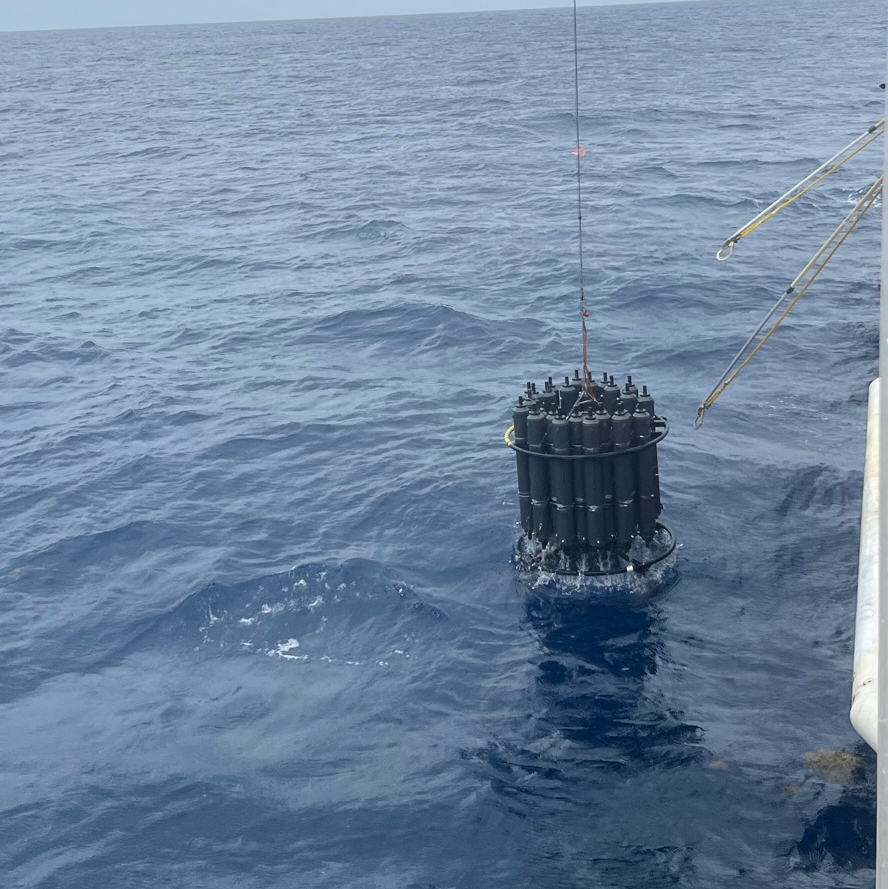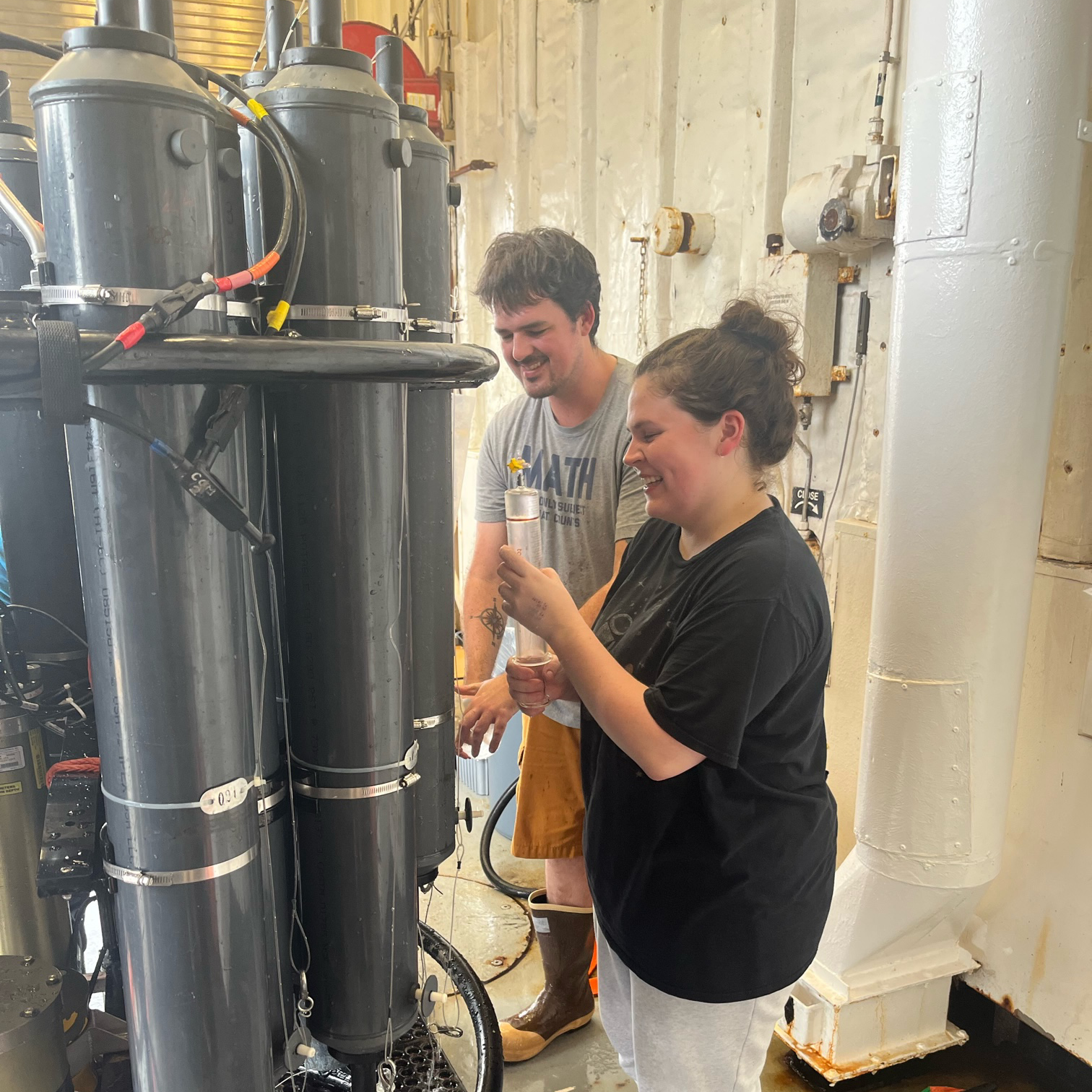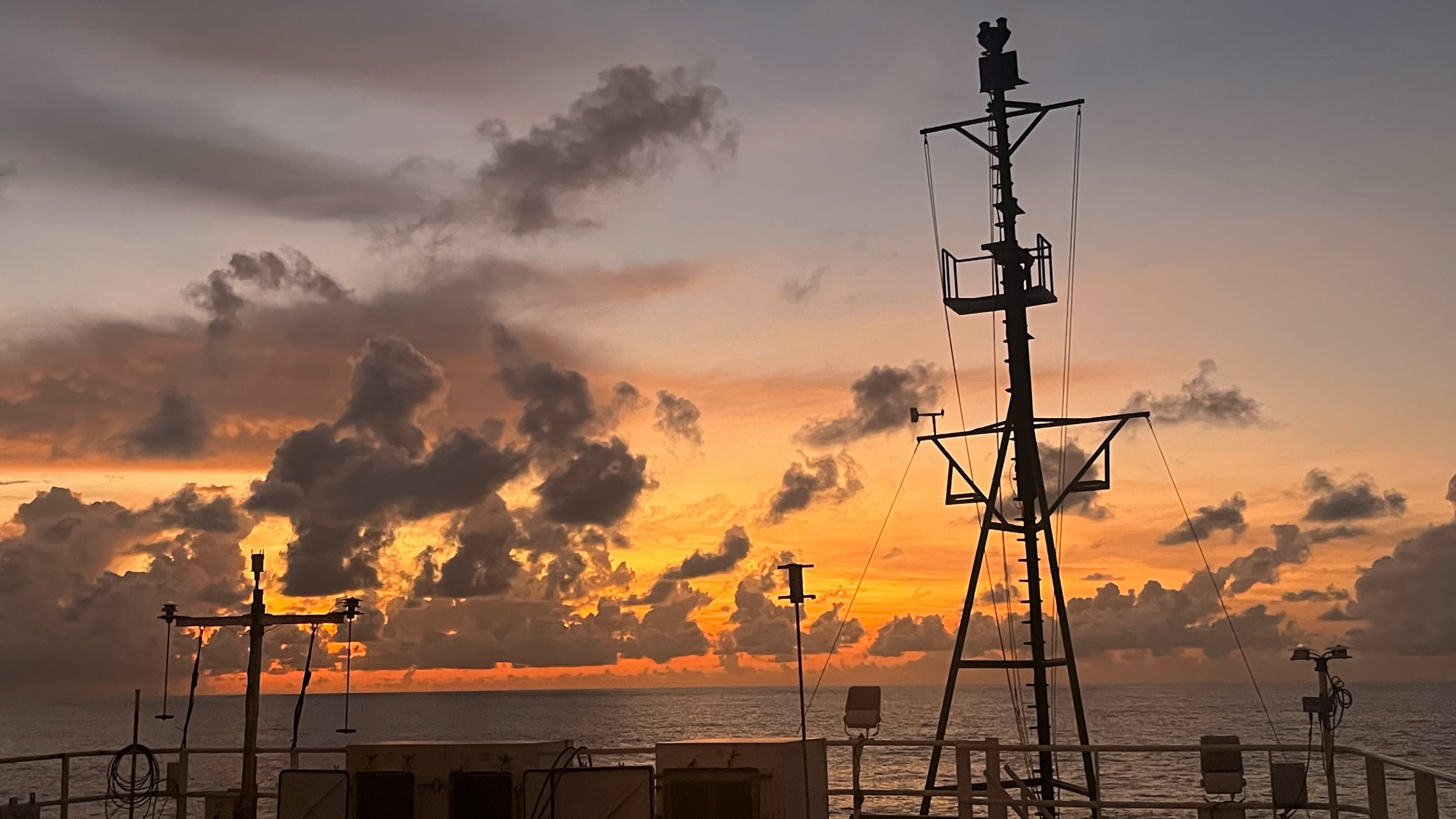Ship operations
March 19, 2023
Zach Erickson
We’re about halfway through the cruise, and the ship has fallen into its rhythm. The interesting thing about a research cruise such as this one is that operations are happening 24/7. So our rhythm is a bit different from what one would expect on land!
One cycle of operations takes about 7.5 hours, and starts with a CTD cast. This involves lowering a large frame into the ocean, packed with sensors and 24 bottles, called Niskin bottles, which have open tops and bottoms. CTD stands for conductivity, temperature, and depth, which are the main sensors on the instrument. We also have an oxygen sensor, a device that measures ocean currents, and an altimeter to tell us how far above the ocean bottom we are. The average ocean depth is about 4 km, or 2.5 miles, and we go to the very bottom – lowering the CTD all the way down takes about 90 minutes! Bringing it up takes even longer, about 2 hours, because along the way we stop and “fire” bottles at specified depths, closing the top and bottom and therefore capturing any water that was inside.

Once at the surface we bring it back on deck and everyone starts taking samples from each Niskin bottle. We’re measuring a large range of values, including oxygen levels, saltiness, acidity, and nutrient levels, so it takes a while for everyone to sample everything – about an hour. By that time, we’re about 1/3 of the way to our next station, 30 nautical miles away, where we start again!

The ship is always working, so that means we are too. Everyone is on twelve-hour shifts, and most people change over at midnight and noon. I’m on the “night shift”, so my day starts at around 10:30 PM when I wake up, go to the gym, visit the galley for some breakfast, and then make my way downstairs to the main lab area to start my shift at midnight. But even though the ship is always working, there is a definite lull in activity in the wee hours of the morning, and if it’s not cloudy an excellent time to stargaze. My favorite part of the night shift, however, are the sunrises, which never fail to disappoint! If there isn’t an operation happening at the same time, I always try to get outside to watch the oranges and reds make their way across the sky – nothing beats a sunrise at sea.

